Back to news... 04 May 2011 8 Tips For Safely Packing Your Parcels
The most common problem with a parcel delivery is the issue of breakages while the parcel is in transit. Perhaps the delivery makes it to the destination, but it's not in the same state that you sent it in. It's the most common complaint for any delivery company to have to take, but more often than not, the problem is simply down to the parcel being inadequately packaged. A courier can do their very best to ensure your parcel arrives in the same state it left, but without an appropriate level of packaging, the inevitable is always going to happen, with your parcel ending up in a bit of a state.
8 Tips For Safely Packing Your Parcels
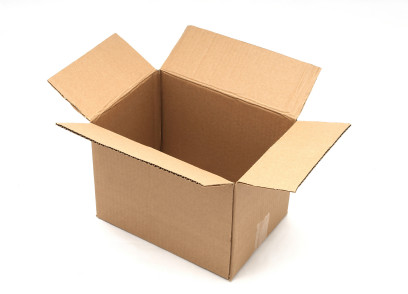 8. Choose an appropriate box.
8. Choose an appropriate box.
Simple but often ignored, too many people send items in the first box they set their eyes upon. Often these boxes can be too thin to realistically survive the journey. Make sure the box you use is of an appropriate thickness. A typical single or double wall cardboard box will suffice, but something like an old cereal box really won't; be sensible with your choice.
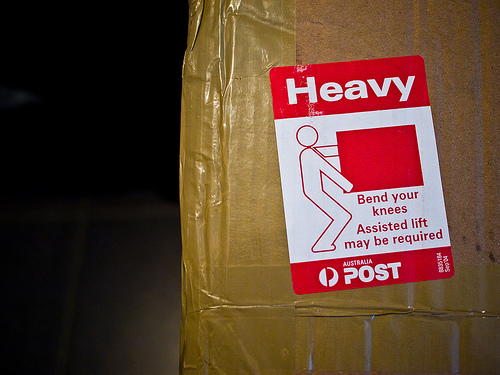 7. Think about weight.
7. Think about weight.
What about the weight of the item you're sending? The heavier the item, the more packaging it will require to prevent damage, and perhaps most importantly, to stay within the confines of your packaging! If you're sending a heavy item using our 30kg parcel courier service, make sure to use a double wall cardboard box. That way your heavy item won't puncture the cardboard box - and even if it does, it remains safe within the second wall of the cardboard.
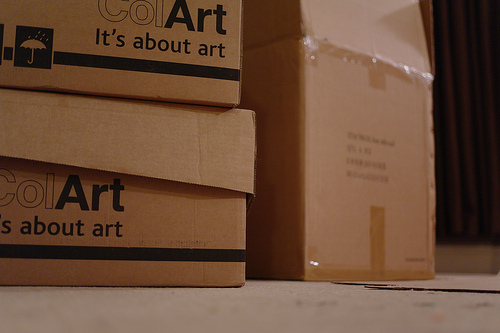 6. Choose an appropriate size box.
6. Choose an appropriate size box.
Don't just choose the first box you happen to set your eyes upon; make sure the box you choose is of an appropriate size. Just because an item fits into the box doesn't mean to say it's suitable. For example, if a box is too small, the cardboard will be stressed and therefore much weaker than it could be, which doesn't bode well for the journey ahead. Too large, and the item will either move around too much in the box, or will require a huge amount of packaging to remain safe. Choose a sensible size box and you'll keep your item safe.
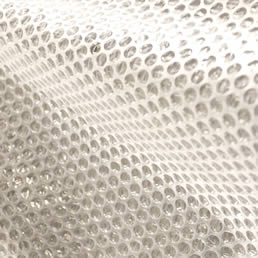 5. Think about your packaging.
5. Think about your packaging.
With the above tips in mind, you've hopefully figured out what an appropriate cardboard box might be for your delivery, but you obviously also need to consider the packaging inside too. It's all well and good stuffing a cardboard box full of waste paper or bubble wrap, but think about whether it's really up to the task first. For example, bubble wrap and waste paper are ideal for lighter items - a heavier item would see better protection through something like airpack packaging or foam packaging.
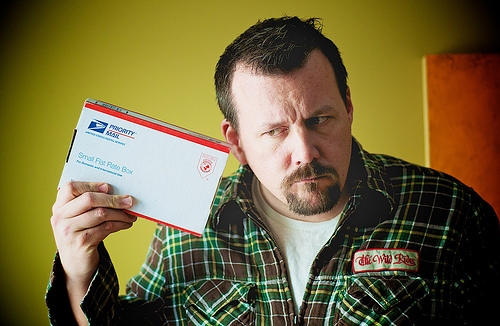 4. Test your packaging.
4. Test your packaging.
A simple test which you should be confident of undertaking if your parcel is packaged correctly. Can you shake your parcel from side to side without fear of anything breaking? If you can't, think about re-packaging your item. Even in the most careful of hands and with the most careful of drivers, your parcel will still move around in the back of the delivery van, so needs to withstand this test!
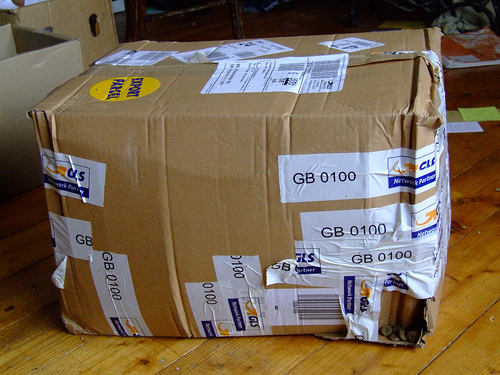 3. Any sticking out corners?
3. Any sticking out corners?
Not all packages are square, and even if they are, the corner of a box can see much more damage than any other area. Protect the corners of your parcel with extra packaging to ensure they remain solid. Tape up any areas which look like they might tear, which is especially important if you're re-using a cardboard box from a previous delivery.
 2. Think about the weather.
2. Think about the weather.
While your parcel might appear solid, strong, and ready for the journey ahead; what about the weather? While the parcel shouldn't be exposed to the outdoors for any more than a few seconds, and while your cardboard box will be fine in the rain for that level of time, the address written on the side might not. Make sure the address on your parcel is not written in something which will run when in contact with water - if in doubt, cover the address with clear plastic to ensure your parcel doesn't end up address-less and therefore lost.
 1. Would you be happy to see the parcel delivered?
1. Would you be happy to see the parcel delivered?
Perhaps the most important bit of advice we can give: Take a look at your parcel - would you be happy if it was delivered to your door? Your customer is the most important part of your delivery, so think about it from their perspective. If your parcel is using a recycled cardboard box, think about covering the box in brown paper to keep things tidy.










 Customer Service: 020 8310 1362
Customer Service: 020 8310 1362











